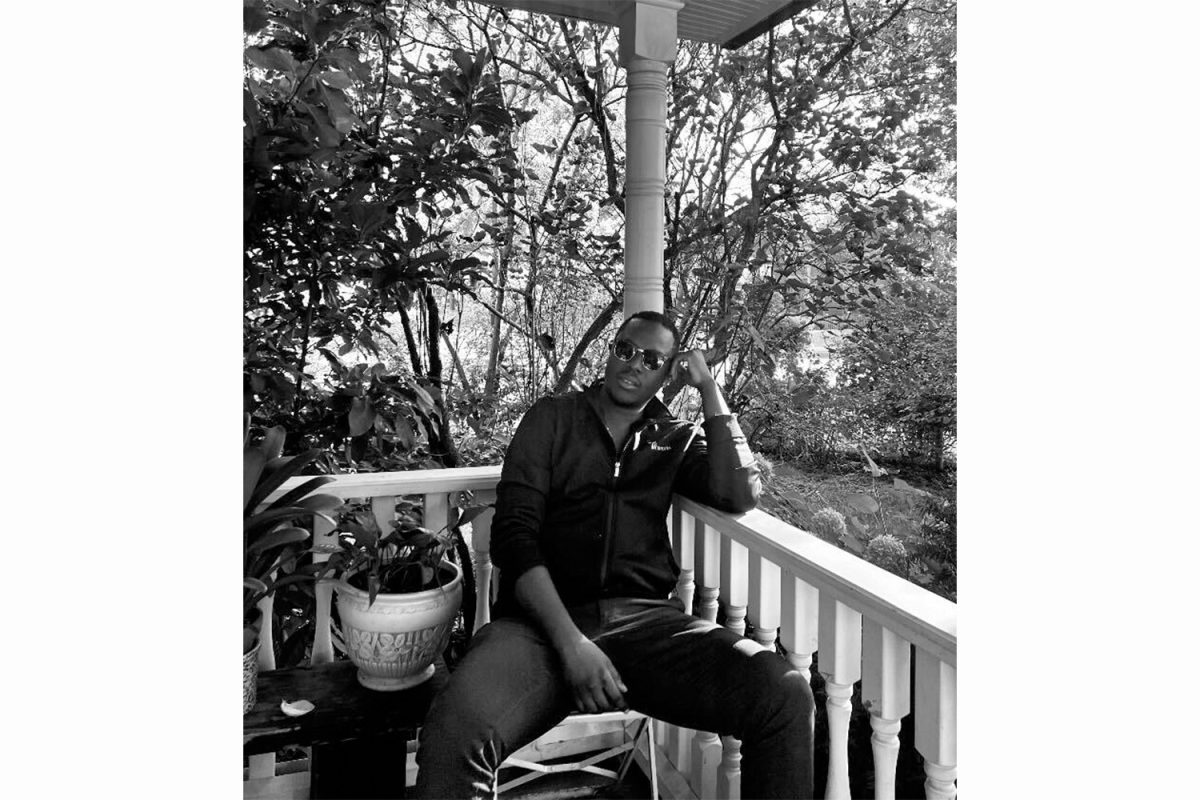It takes Andy Rausch months of intense planning and coordinating for an drag-queen pageant.
There’s preparing what to say in all the interviews, polishing his talent to win over the judges, and perhaps the biggest challenge of all, deciding on a costume. For him, a costume isn’t just for show; it’s a glamorized reflection of his inner self. And his favorite one at the moment is a very large green overcoat with feathers blossoming everywhere, which he describes as “very avant-garde.”
“There’s a lot that goes into picking a costume,” he said. “Most of them I make, because it reflects my personal style. I always look for something that shines and sparkles, and let’s just say that I spend a lot of money on rhinestones every month.”
He has performed in drag shows and pageants for around three years and has racked up five victories in regional drag-queen pageants. Pageants are becoming more popular among drag performers in the past few years, he said — 35 contestants participated in Miss Gay Iowa USofA in October 2010.
In addition to dressing in drag, Rausch also works as a bartender at Studio 13, 13 S. Linn St., which generally, every Friday and Sunday features a drag show at 10:30 p.m. Admission is $5.
Most of the shows at Studio 13 are directed by local drag-queen Dena Cass, who has performed in drag for more than 20 years. He describes the art of being a drag queen as almost nostalgia for another culture.
“Drag queens are the New-Age Romany,” Cass said. “We’re like how Romany used to travel in little packs, and do shows, and entertain for money. We’ll also trade stuff, like, ‘I’ll give you 10 feathers for 13 beads,’ because we have to be creative when it comes to making a costume.”
While a typical drag show is mostly for fun and entertainment, the pageants and contests are the real deal. A typical drag-queen pageant features three separate categories for judges: the interview, the gown section, in which all show off the dresses and costumes, and a talent competition, which can include anything from singing and dancing to pretty much anything one can imagine. All this pressure can lead to some intensity, which Rausch knows all too well.
“Think of it as one of those shows you see on TV, Little Miss Sunshine or something,” he said. “It’s over the top, cutthroat, and intense, and there’s a lot of drama that goes along with it. I alienate myself at times at pageants because I want to stay focused, but all the tension and stress is worth all the fun it brings.”
Patience is a virtue for most contestants; it can take performers up to five hours to get makeup and costumes ready for a show. Even for amateur drag contestants, getting ready is more of a challenge than the live performance. University of Iowa freshman Damon Sindelar participated in his first drag show last Halloween and right away got a feel for what it takes.
First, he chose the song he wanted to perform to — a Shakira track. Next came the costume, which was pieces thrown together from a thrift store. From then on, it was all practice.
“I based most of my dance moves from [Shakira’s] music video, so I had to watch that and practice all her choreography,” he said. “Then putting the costume on took about an hour — makeup, fake boobs, and all.”
But starting out in drag-queen pageants isn’t always a matter of what you know as opposed to whom you know. A number of “families” are in Iowa City and surrounding areas — “families” are a group of performers who take in wannabe drag queens and turn them into what it takes to be a pageant winner. Rausch is a member of the Belle family and credits its acceptance of him as a key component.
“How the families work is that they help each other in choosing their interests, styles, and getting started out with shows,” he said. “Families all have similar styles and relate to each other well. We’re all such good friends, and we’re basically role models for each other.”
Cass is the founder of the Cass family, one of the more well-known groups in the Iowa City area. He deals with finding the balance of guiding the other drag queens in his family as well as maintaining his status as a top drag-show contender.
“I’m the first Cass,” he said. “All the other Casses are girls I’ve given my name to, and I’m like their mother, the one they all learn from. I take them under my wing, show them how to do hair, and makeup, and all the other things to make them better as entertainers.”
While the hectic tension and drama unfolds backstage, it’s all smiles and fun once the drag queens step out under the spotlight. Davenport native and frequent drag-show audience member Mike Sampson credits the performers’ ability to command the stage as the biggest spectacle.
“It’s all about their presence on the stage,” he said. “If they’re able to capture our attention and stand out in any way from the other performers, then they’re the ones whom I’ll most likely tip.”
When Cass is performing, it’s all business as usual. It takes people skills to get a feel for what the crowd wants, and with 20 years of experience under the belt, he has seen it all.
“You just learn to read the audience members and learn to see what they want or how they’re feeling,” he said. “When I go out, I’ll go to each table real quickly, and you can tell when people go to you or shy away. The ones who want it, you give them more, but you can tell if someone’s had a bad day or if someone just wants to have fun, which is really what it’s all about.”
While the pageants involve the money and drama, the regular drag shows bring together audiences and drag queens alike. Somewhere through all the cutthroat, backstage drama, intense costume picking, and months of practicing, Rausch also said he believes that at the end of a performance, it’s all entertainment.
“What makes me do drag is making people smile and putting on a great show,” he said. “I’ve always been involved in theater and shows in some aspect, and that’s what drag lets me do — be an entertainer and let people smile again. If I never made a dollar, I could still say I made people smile, and that’s all I really care about.”






